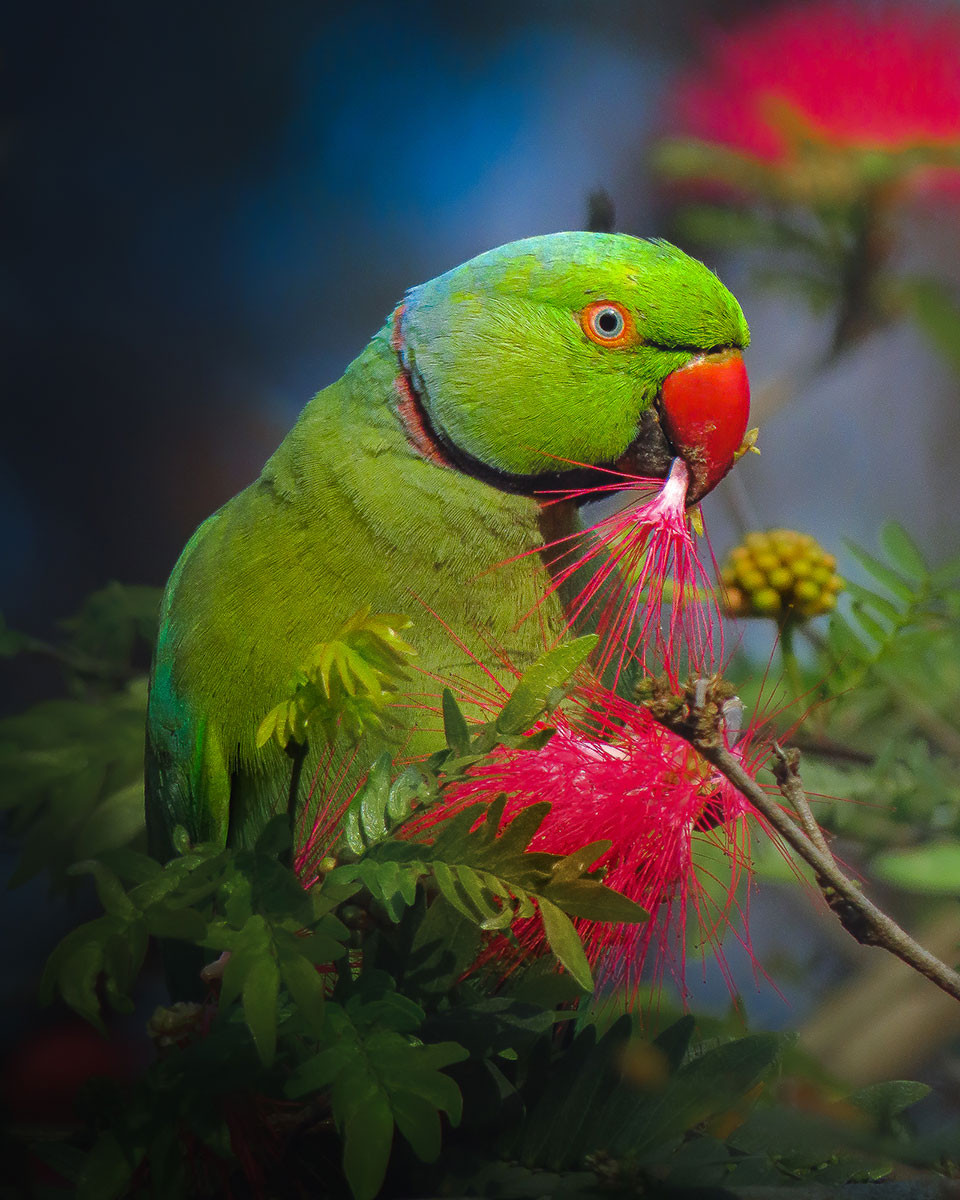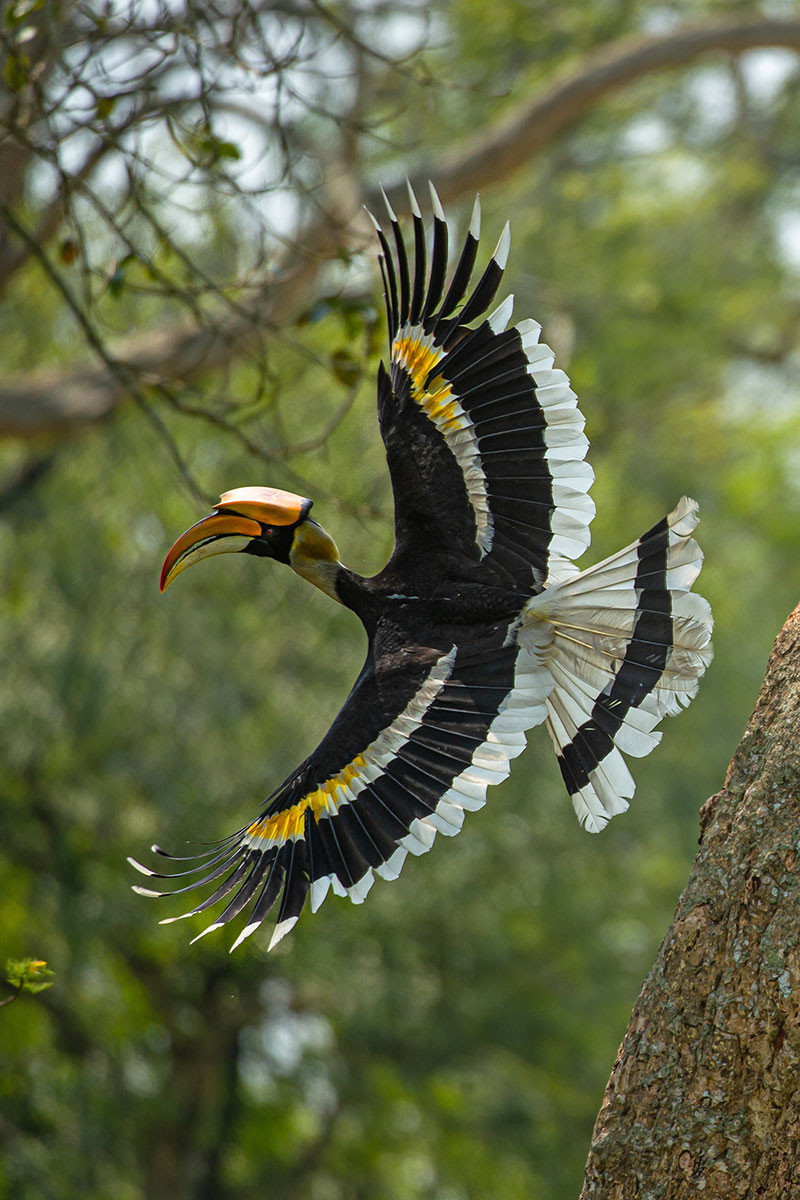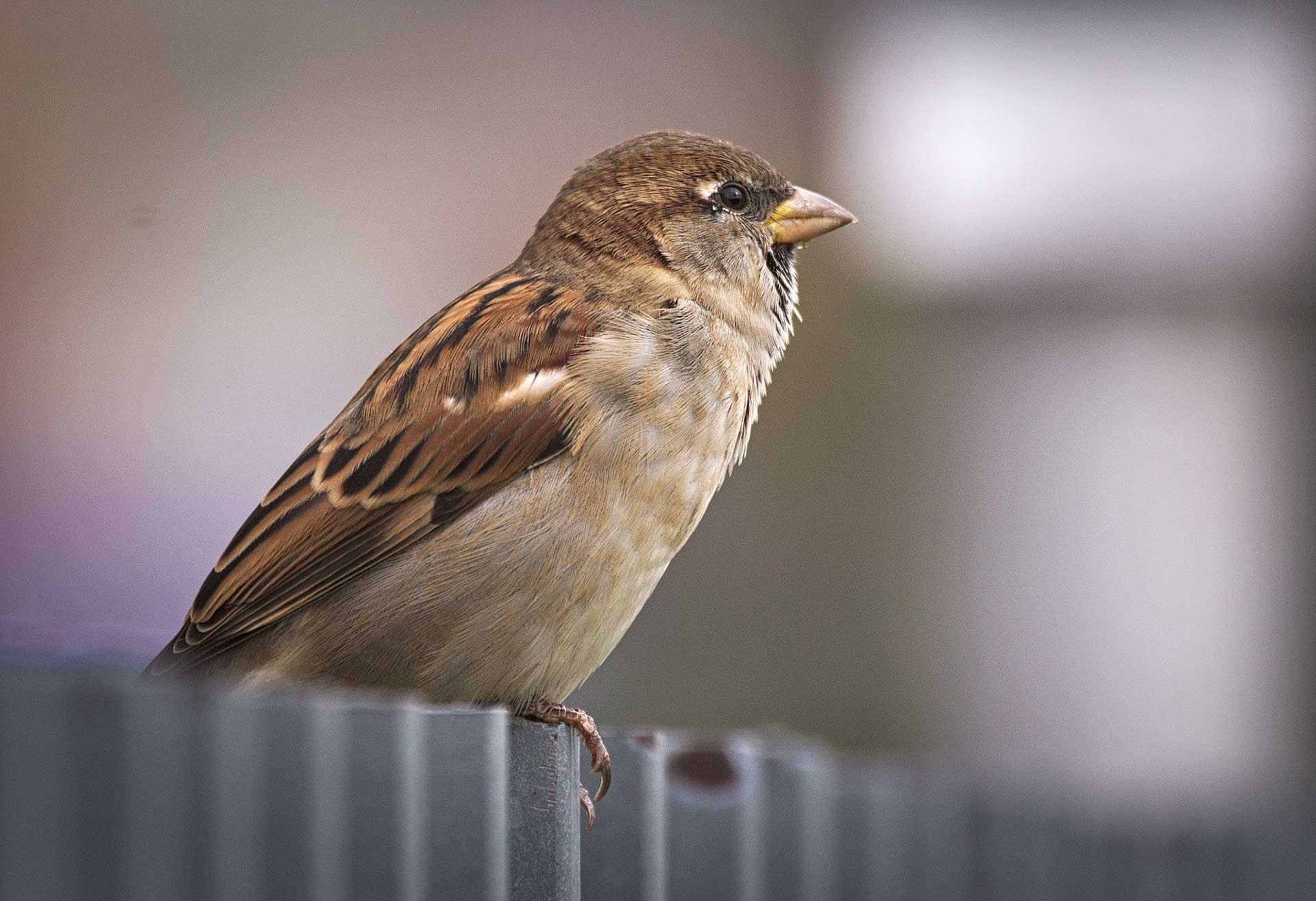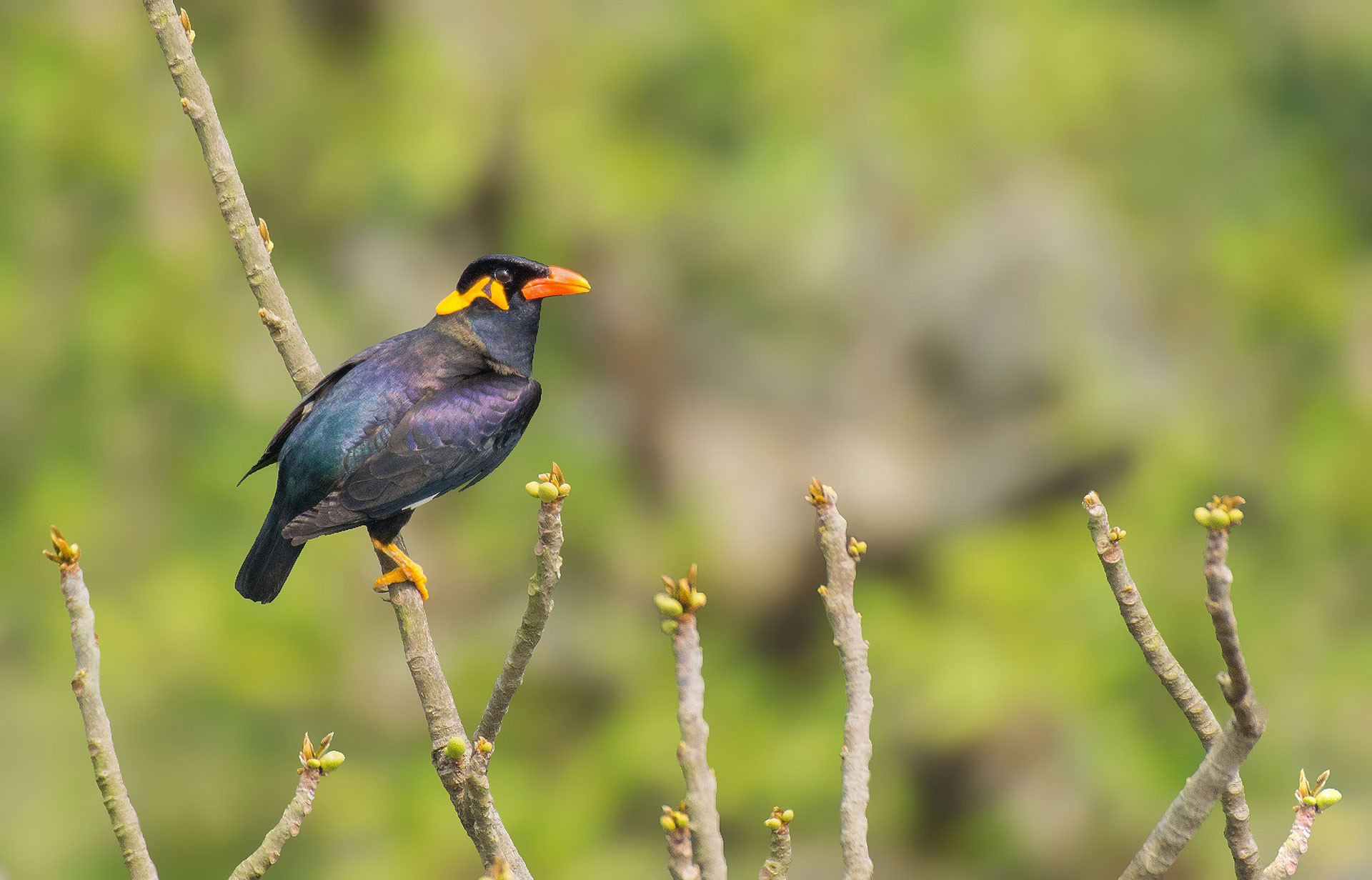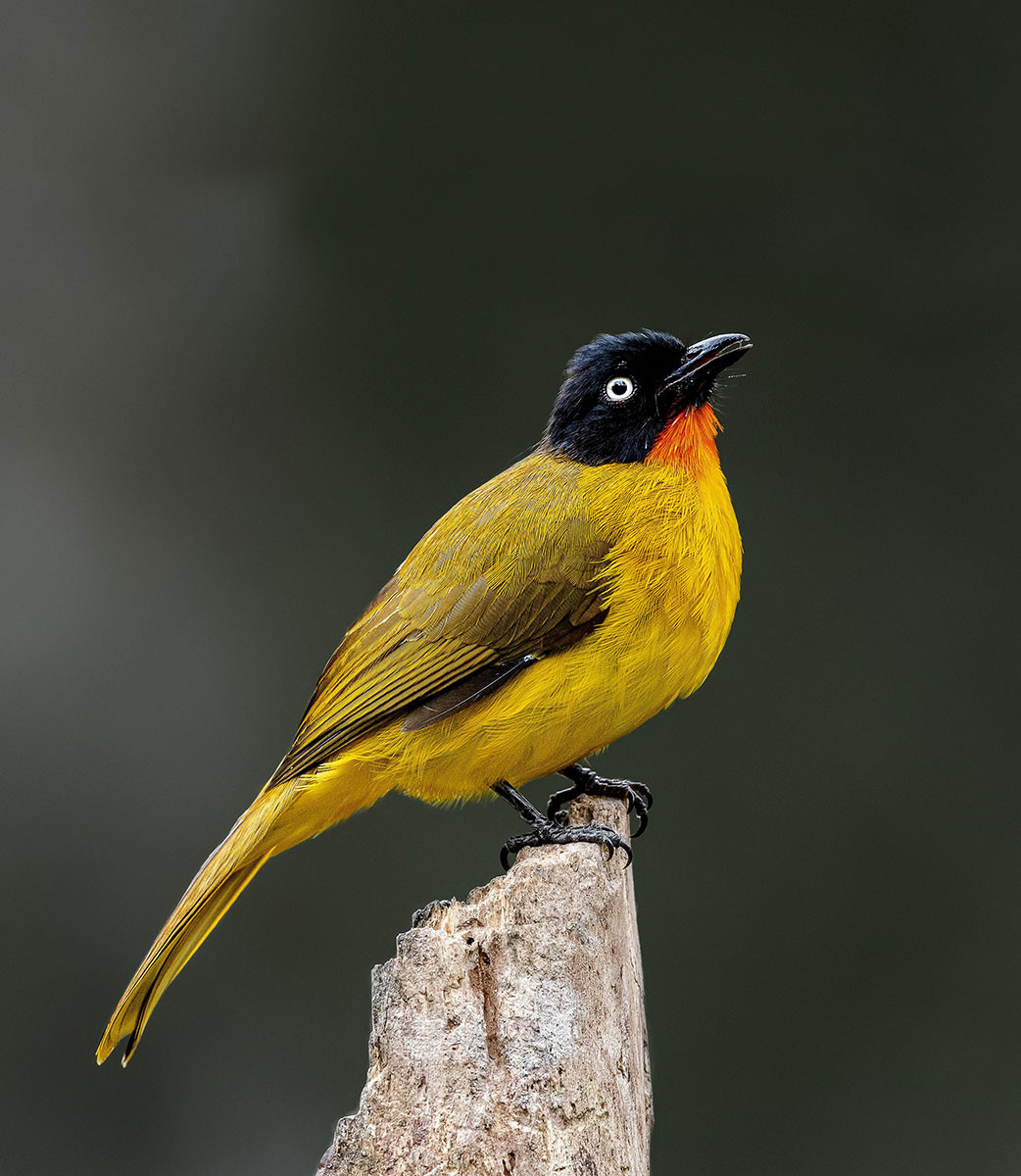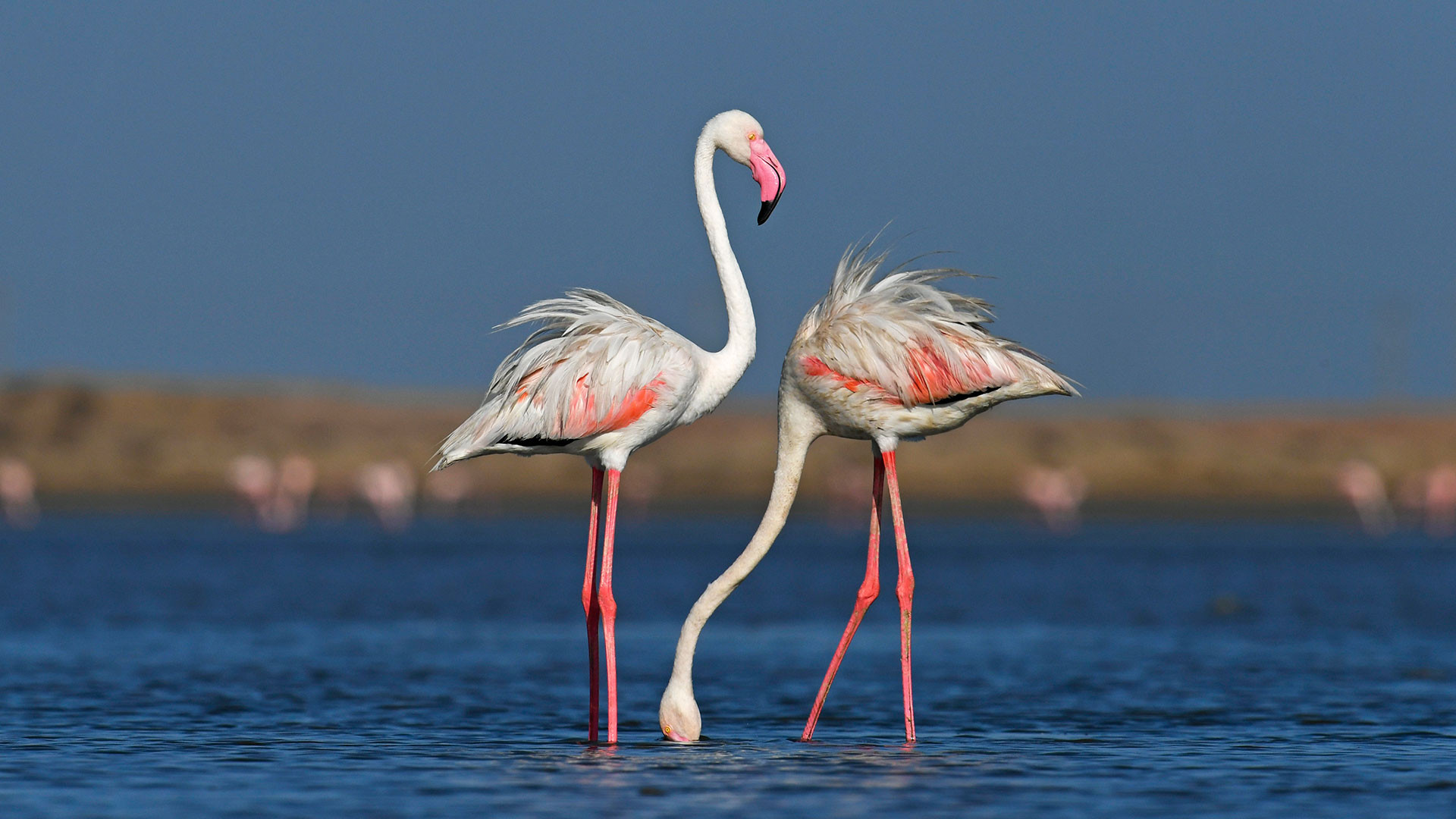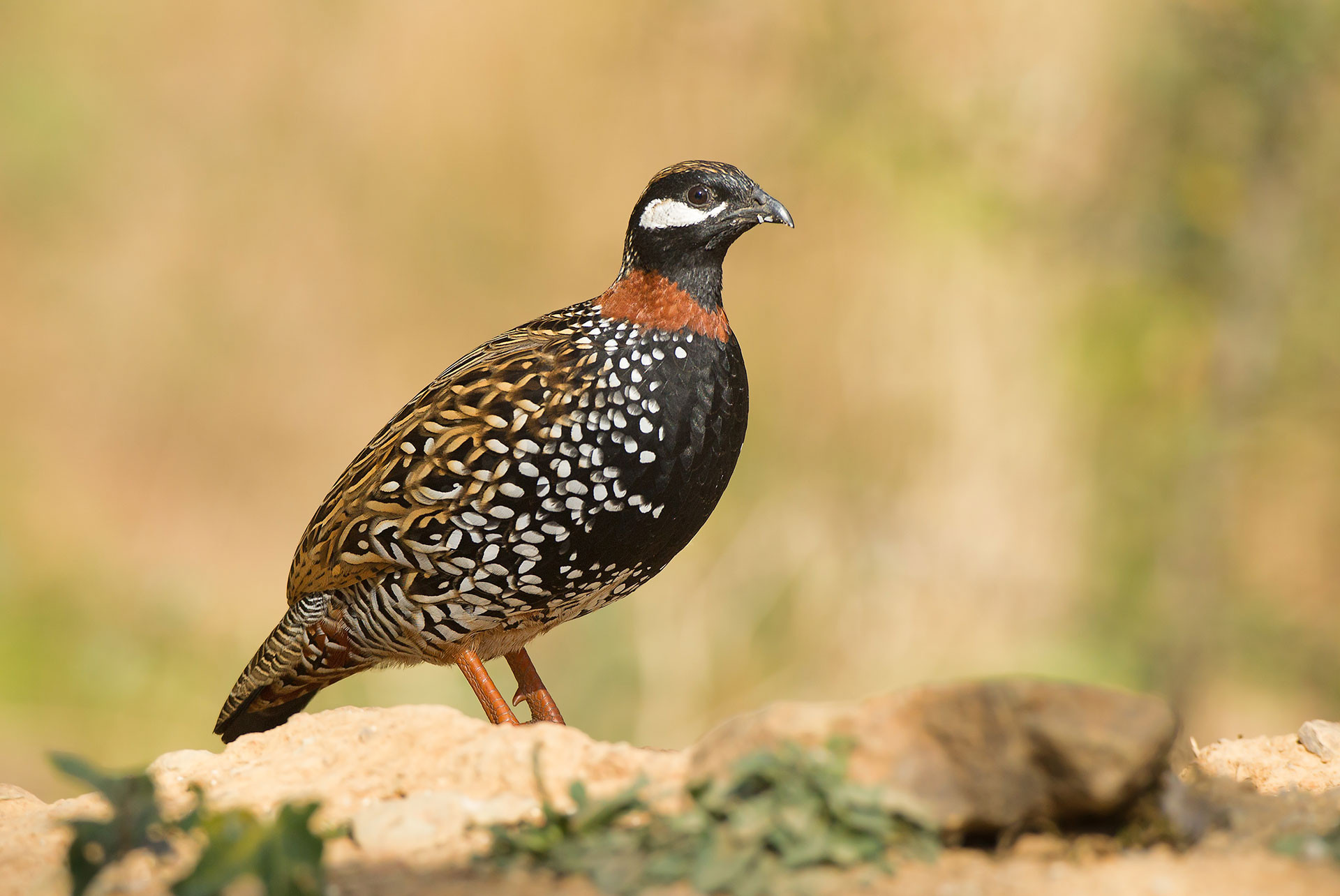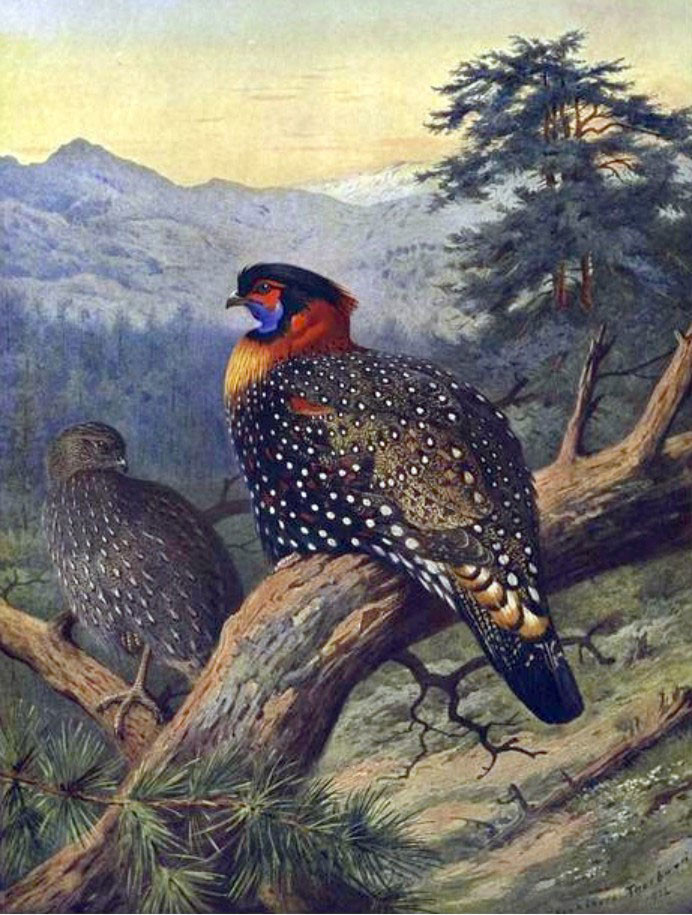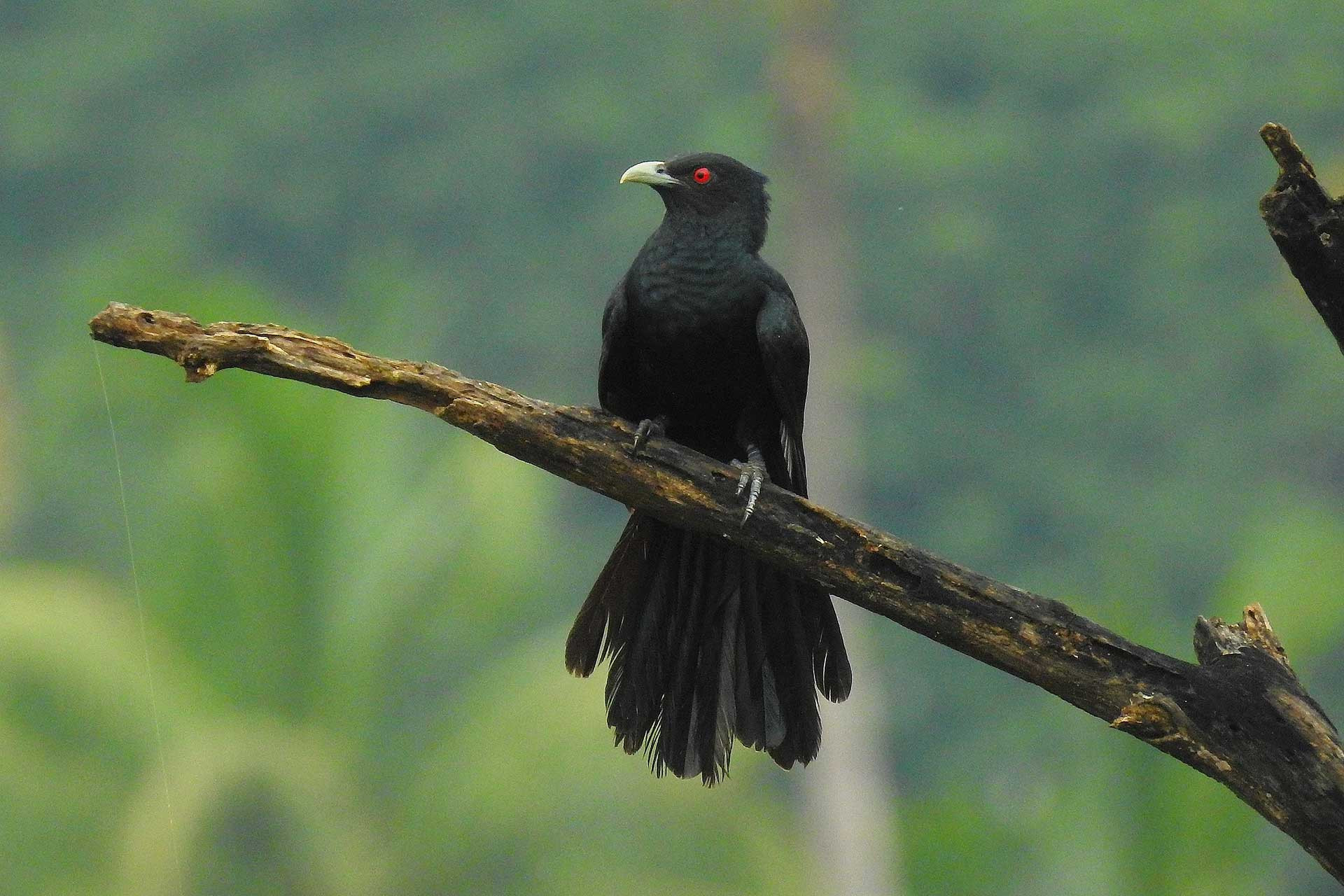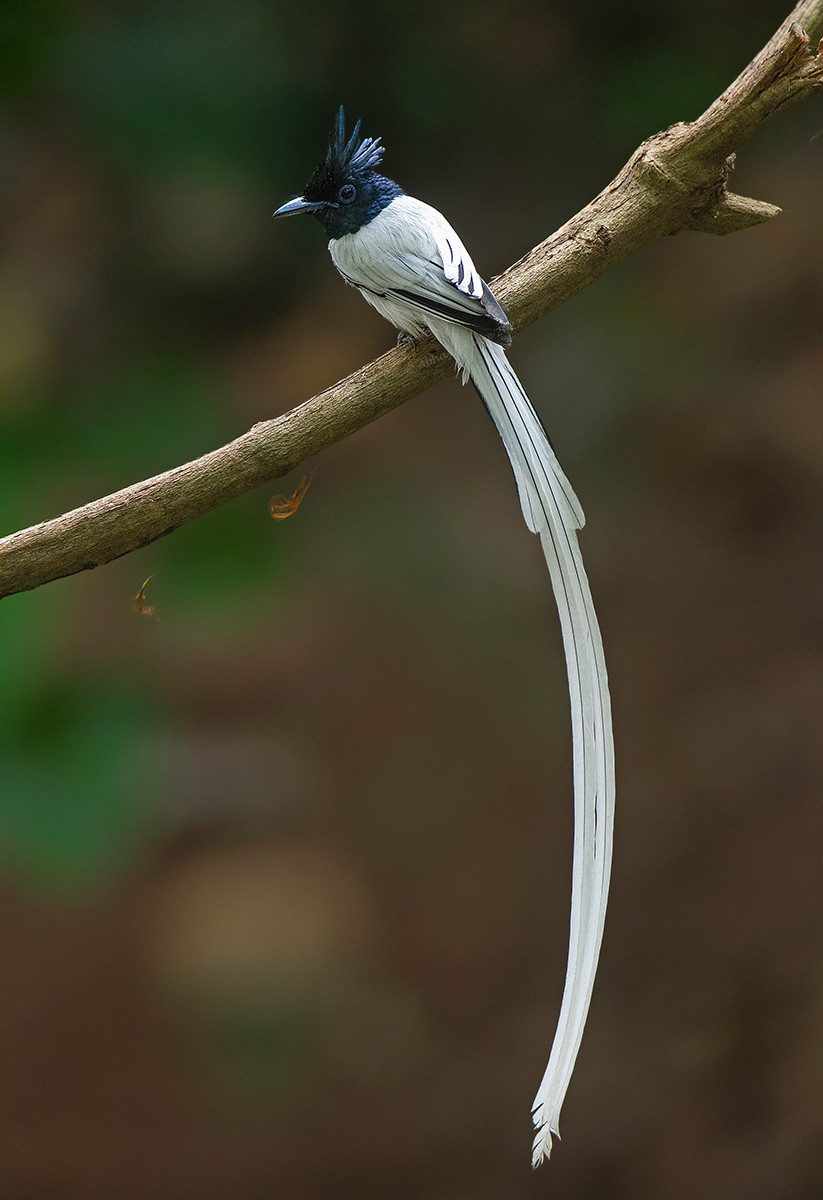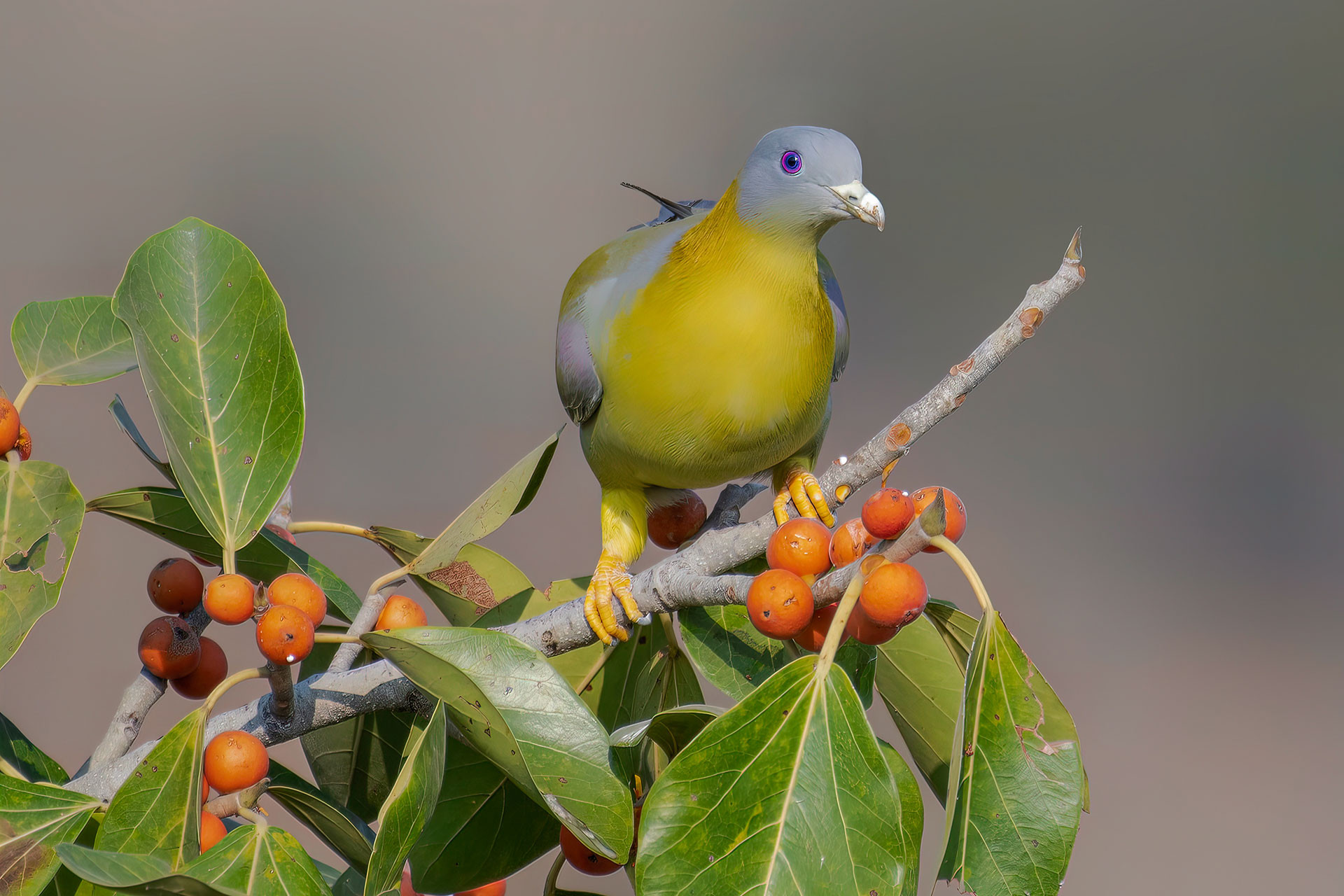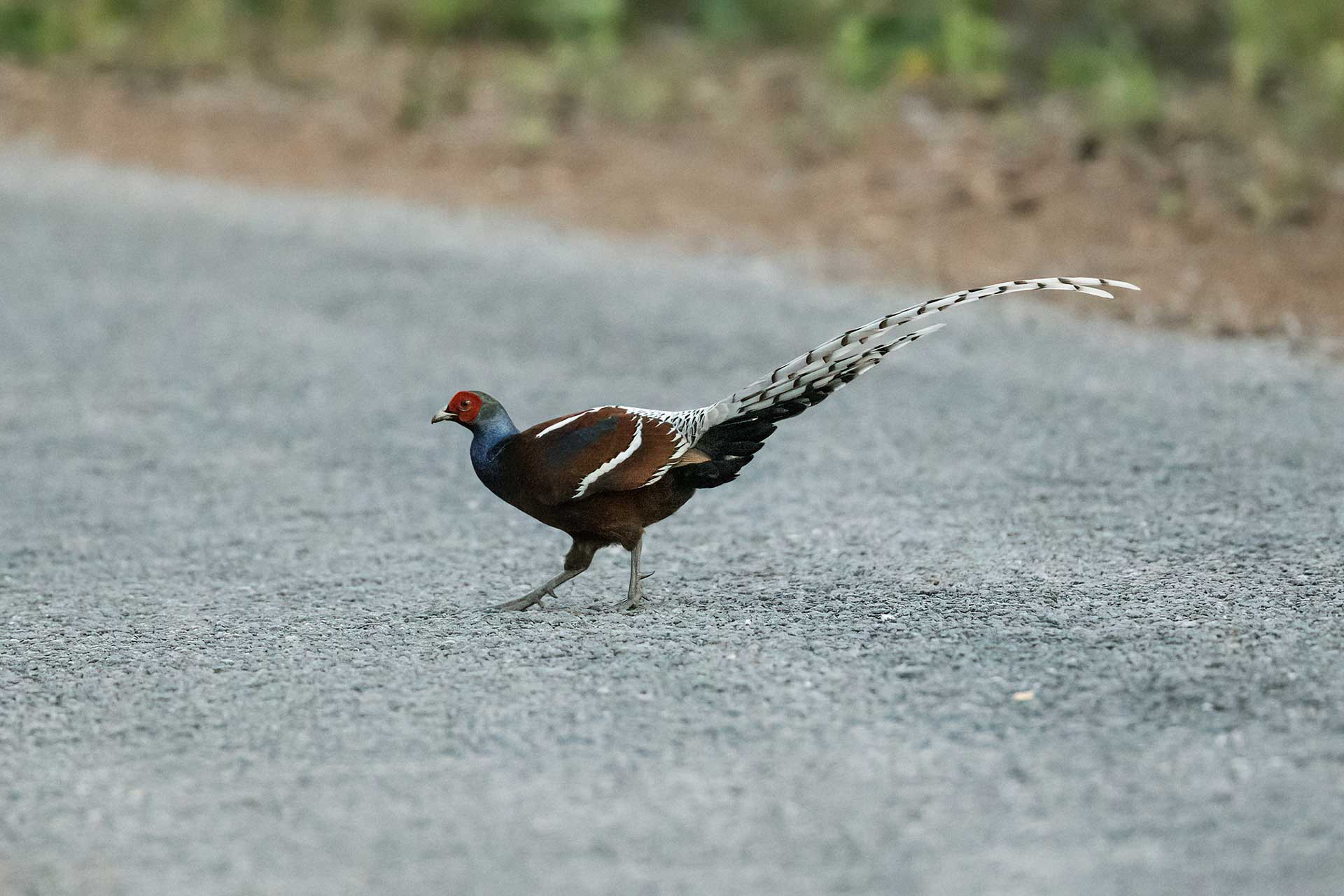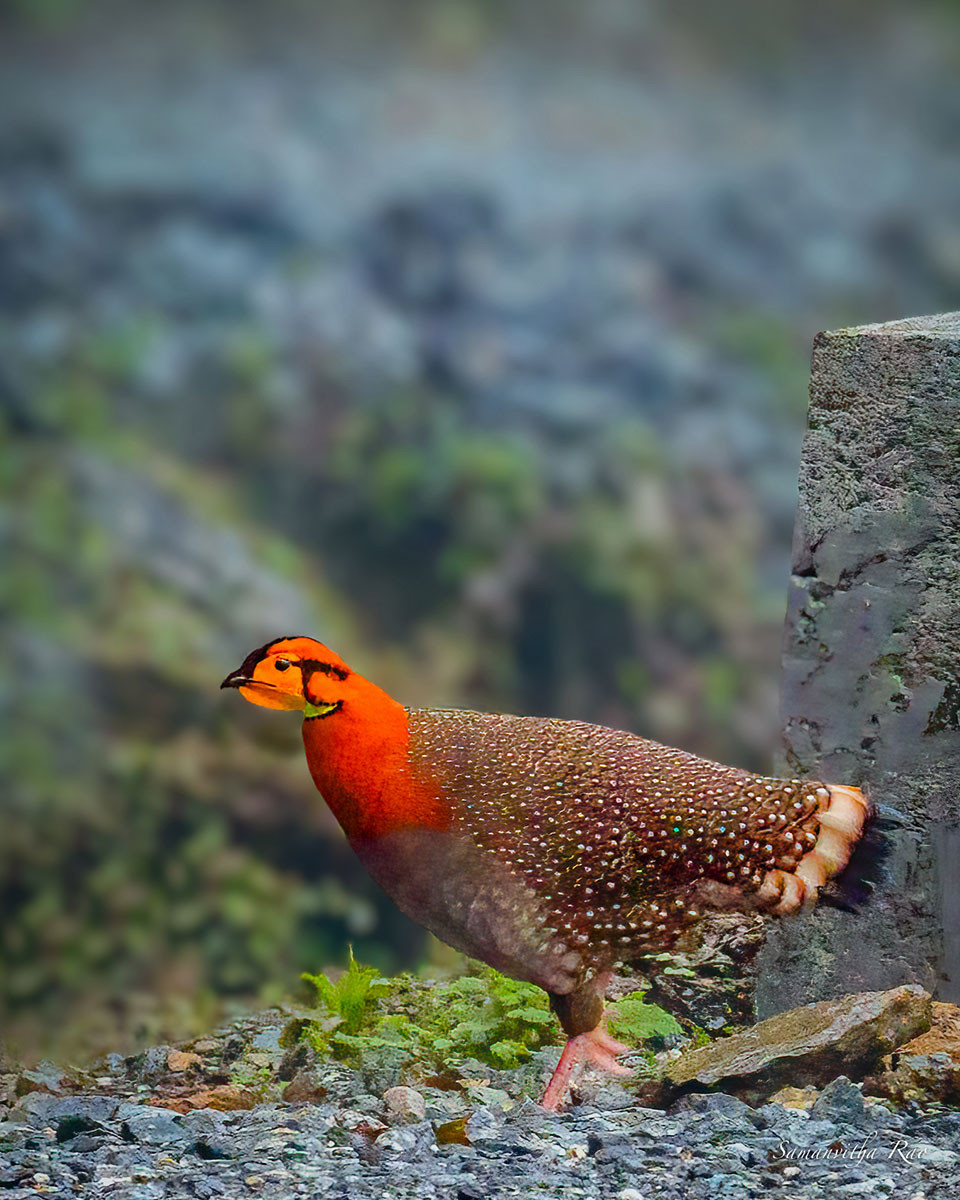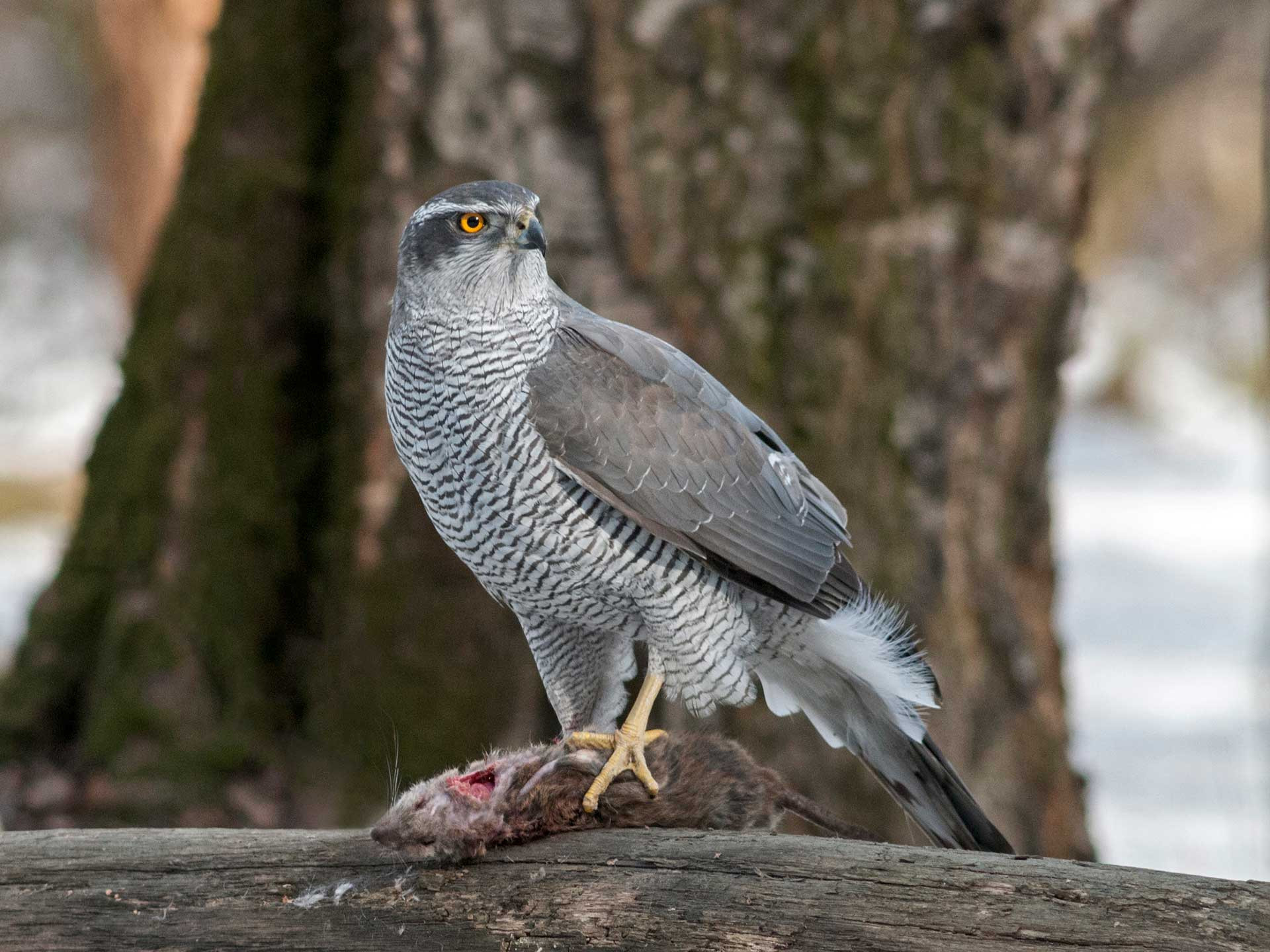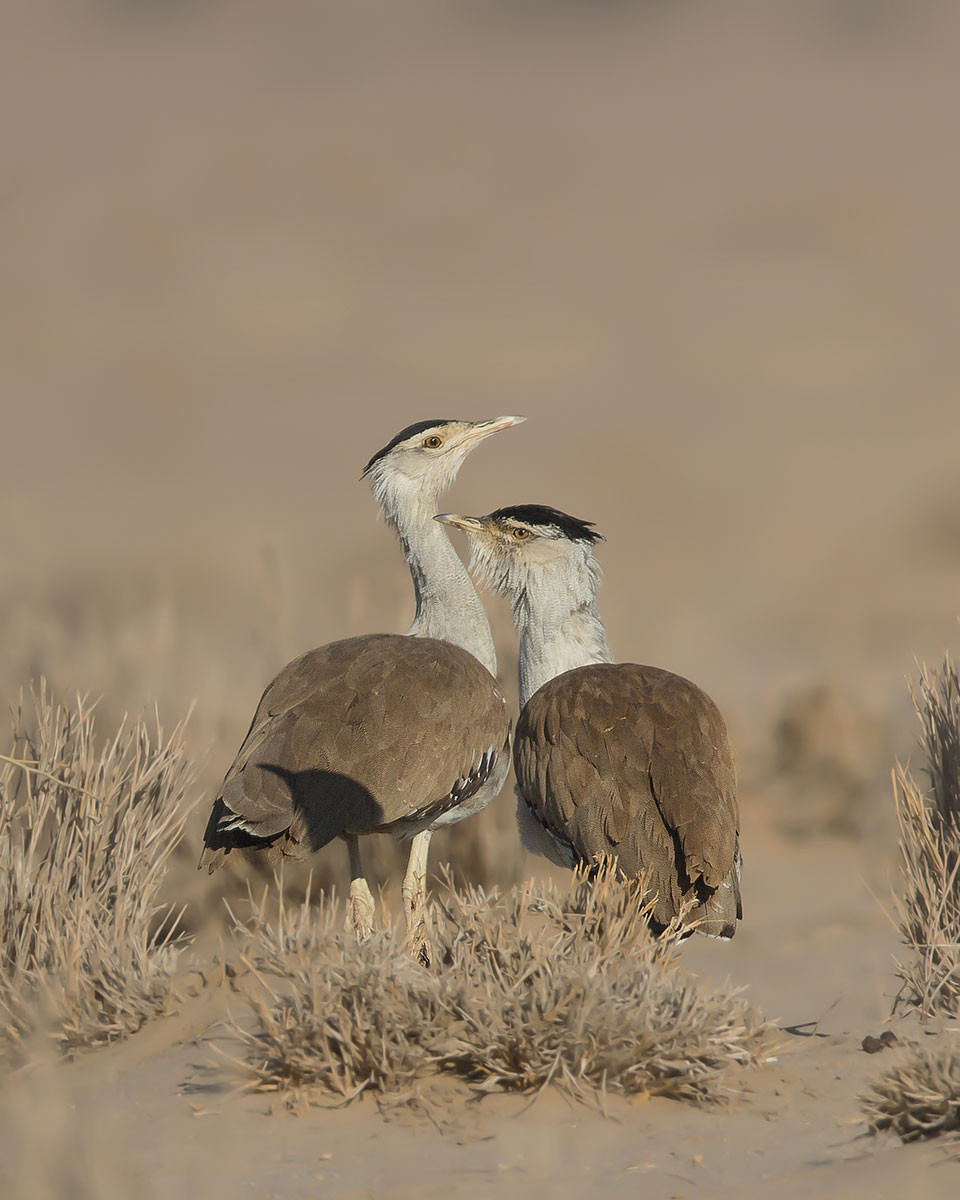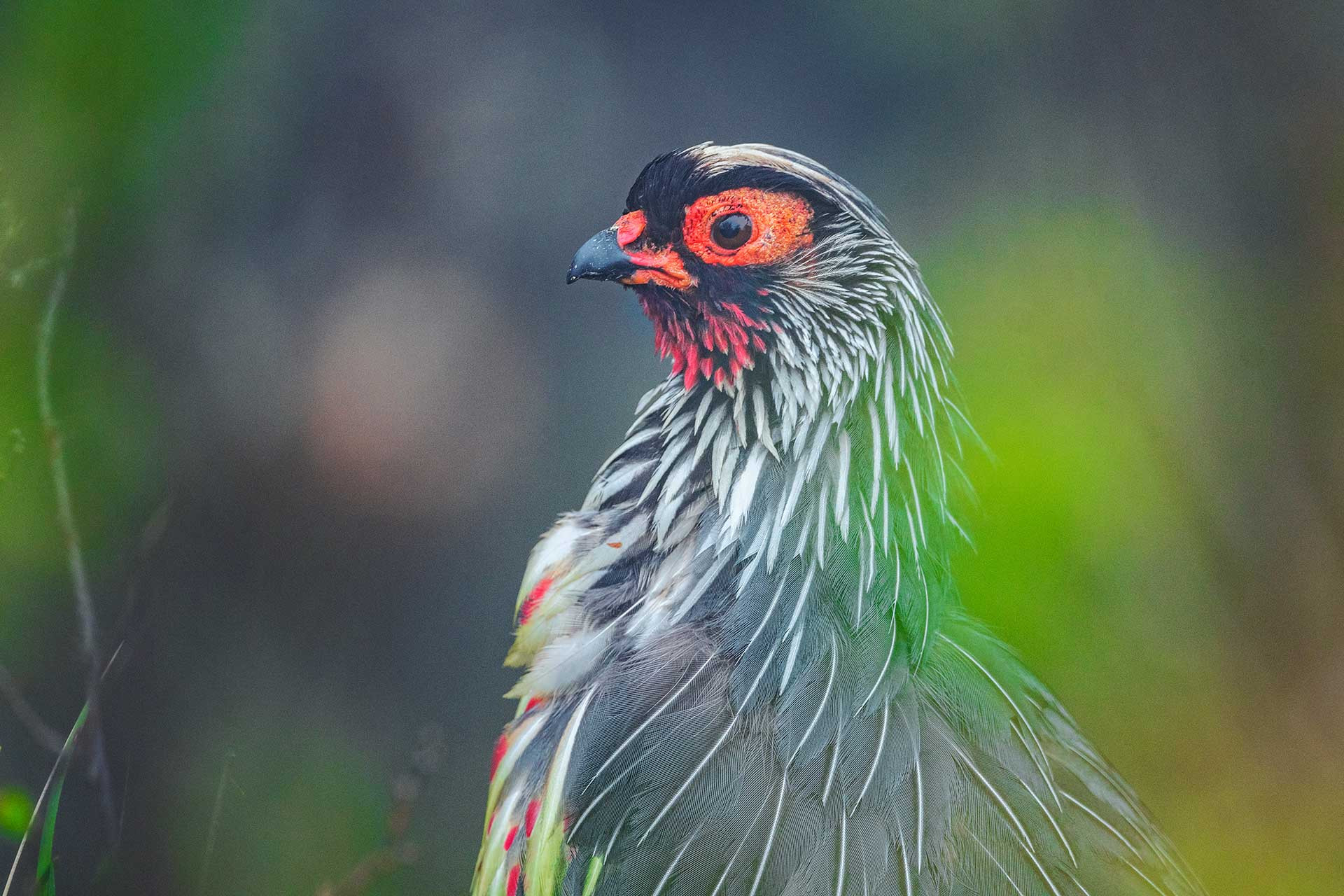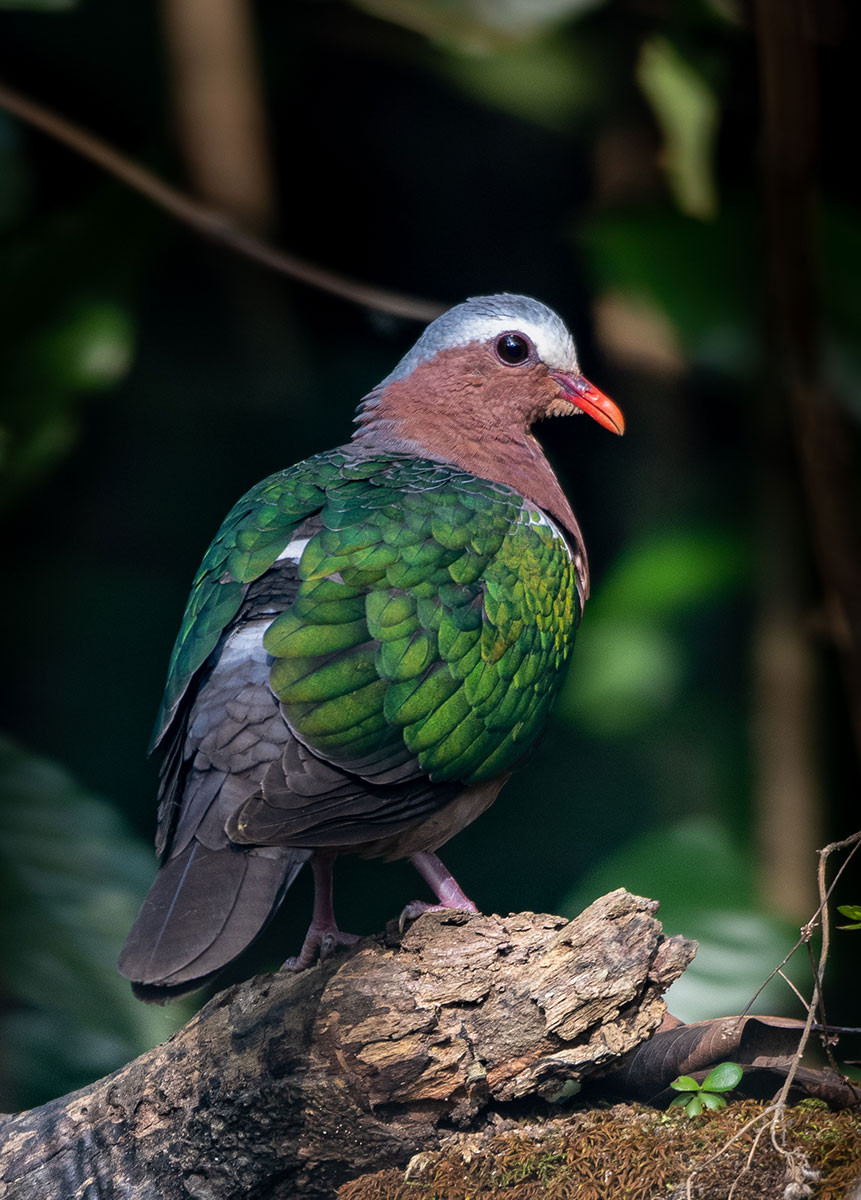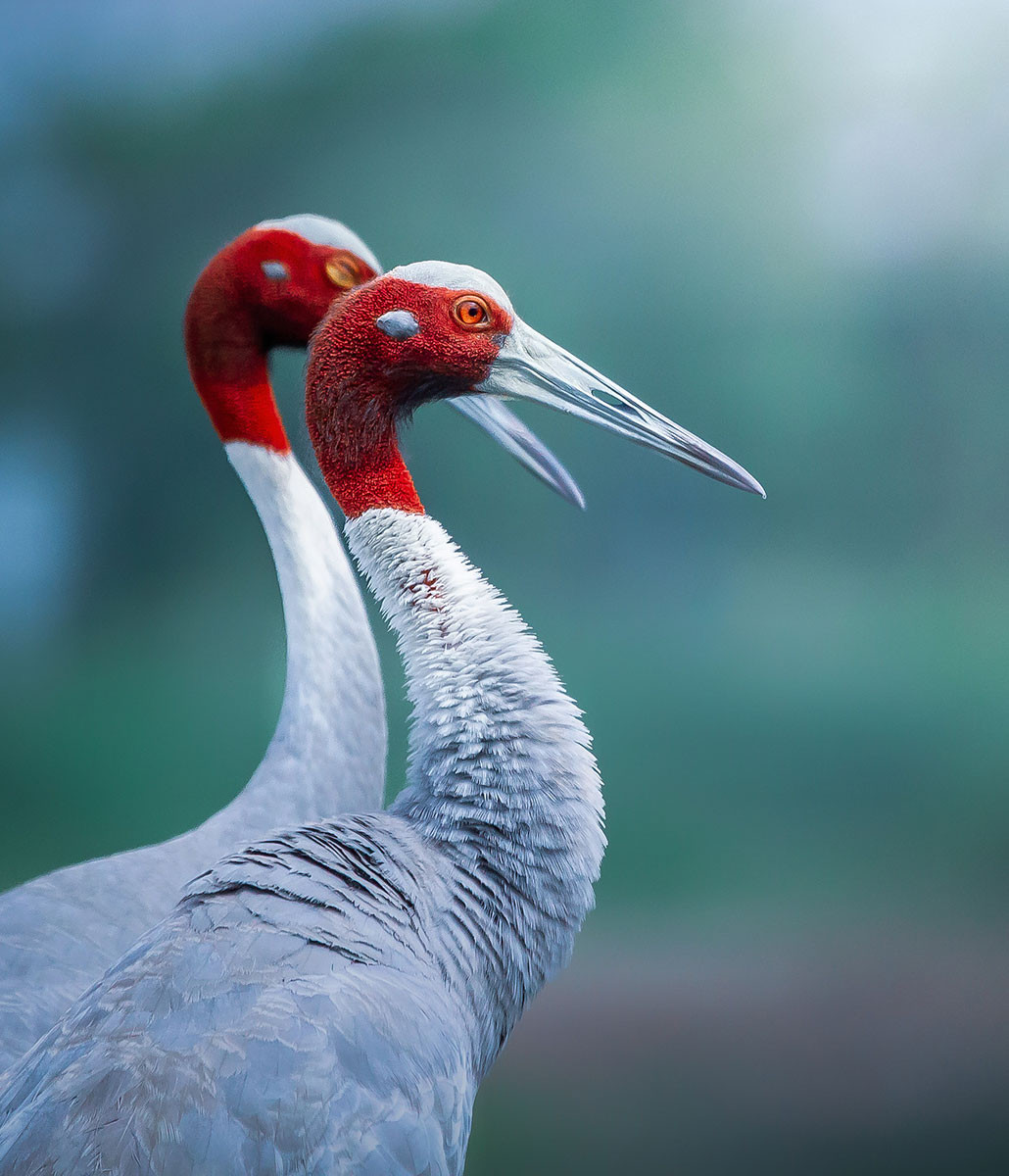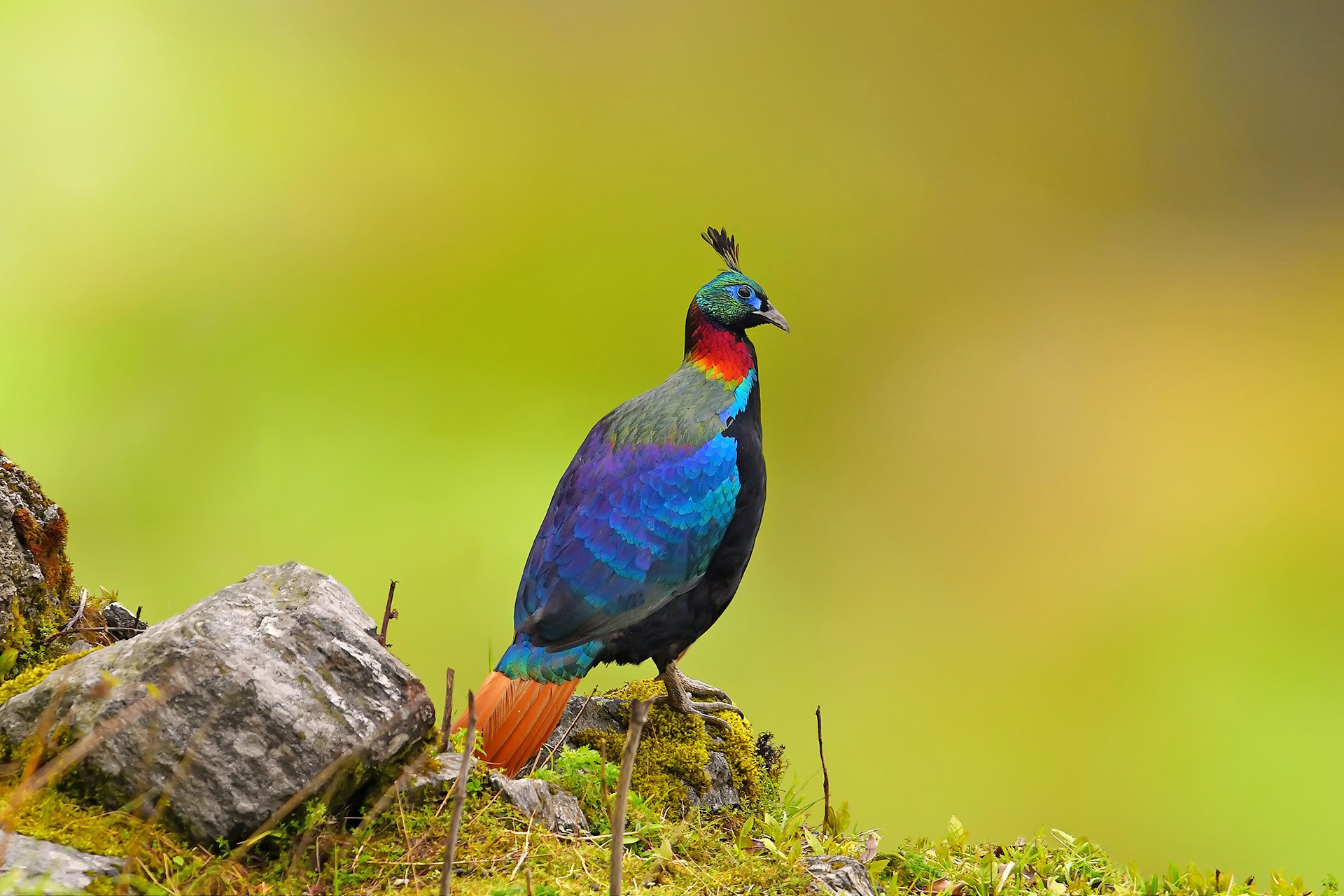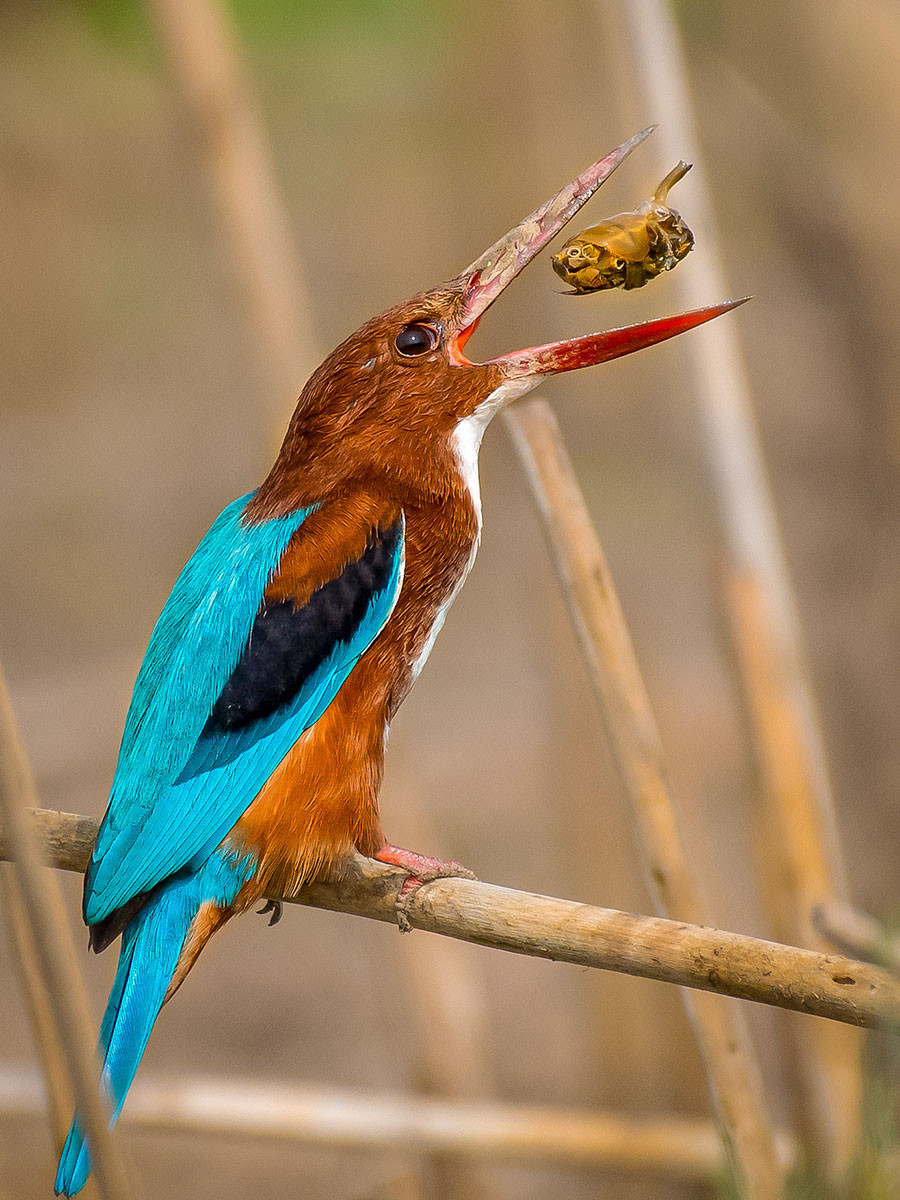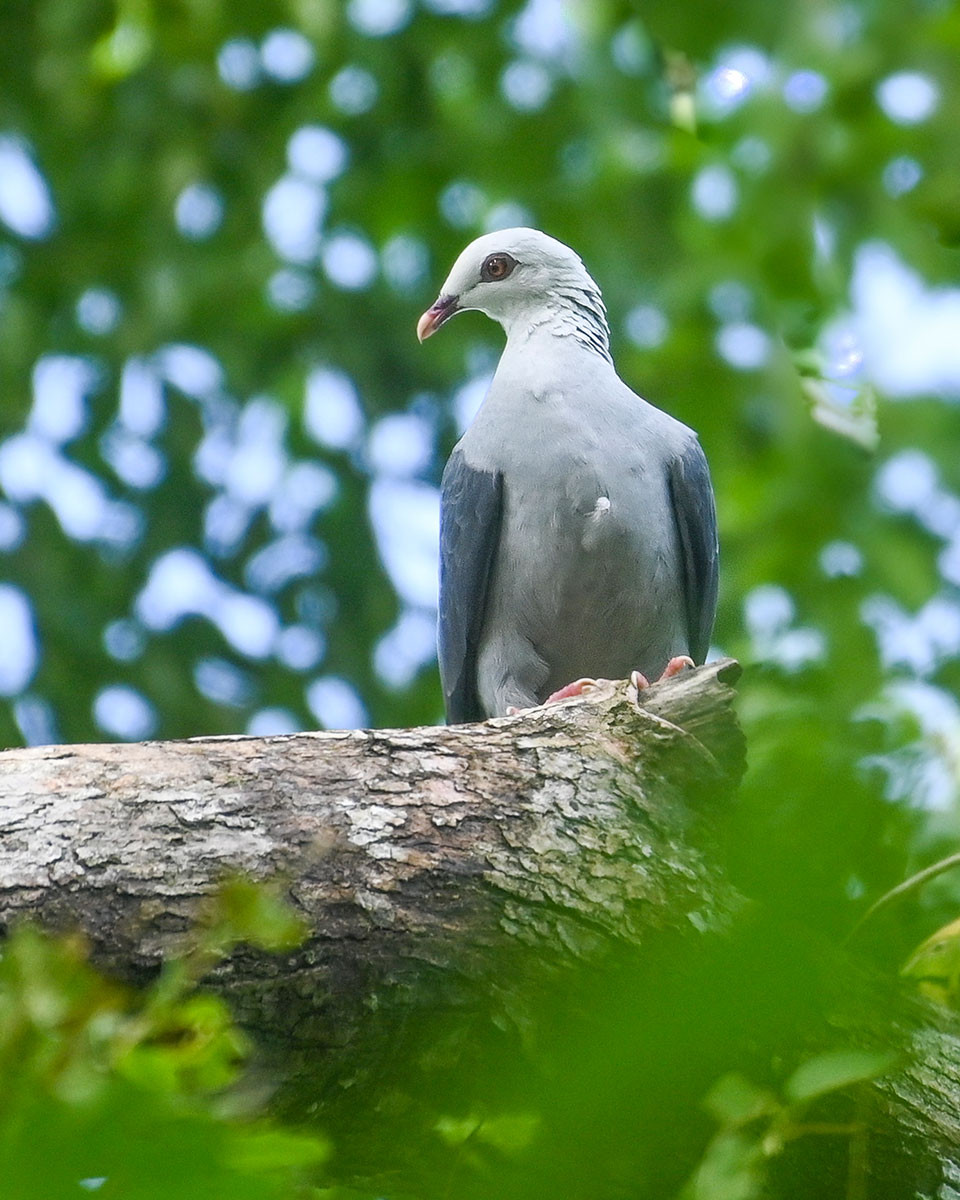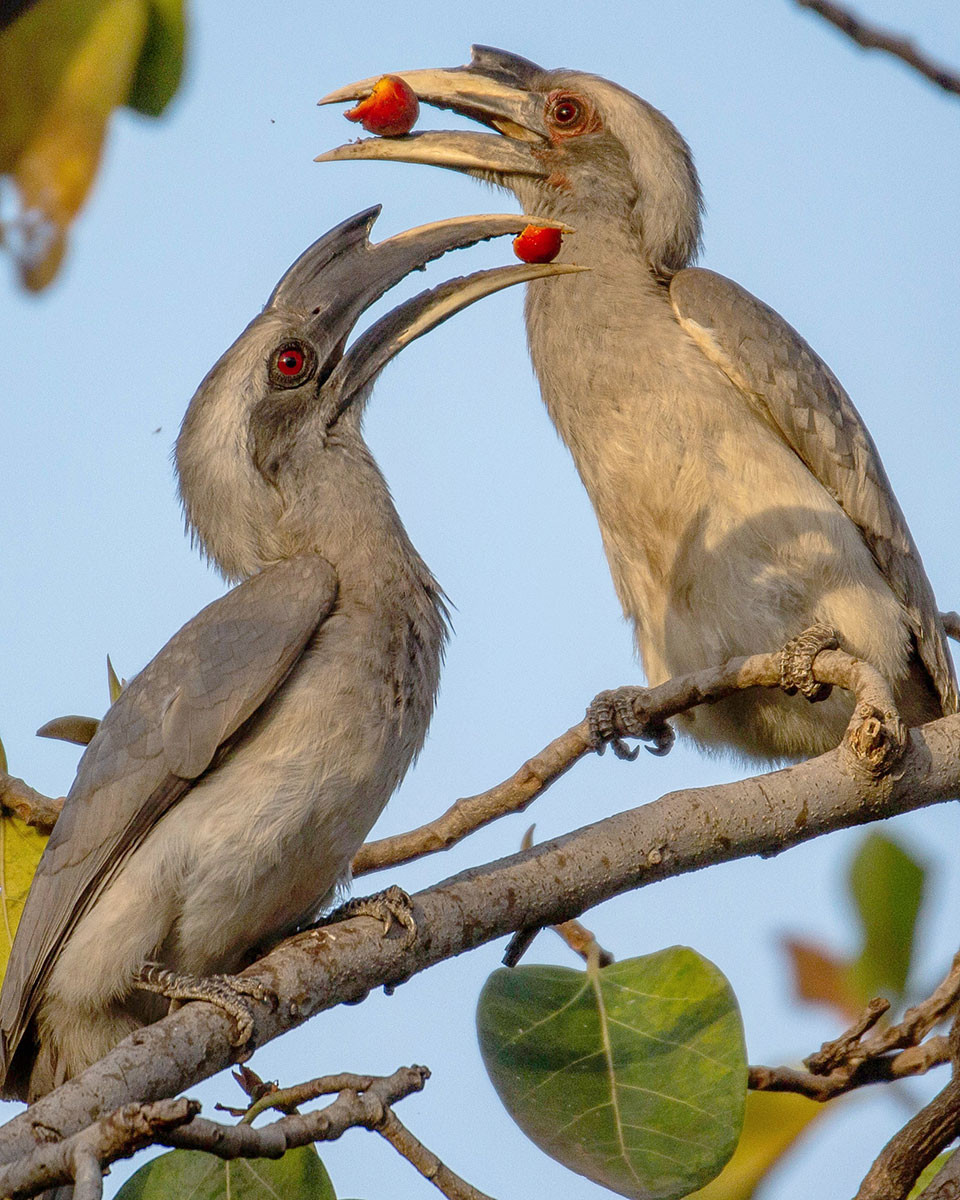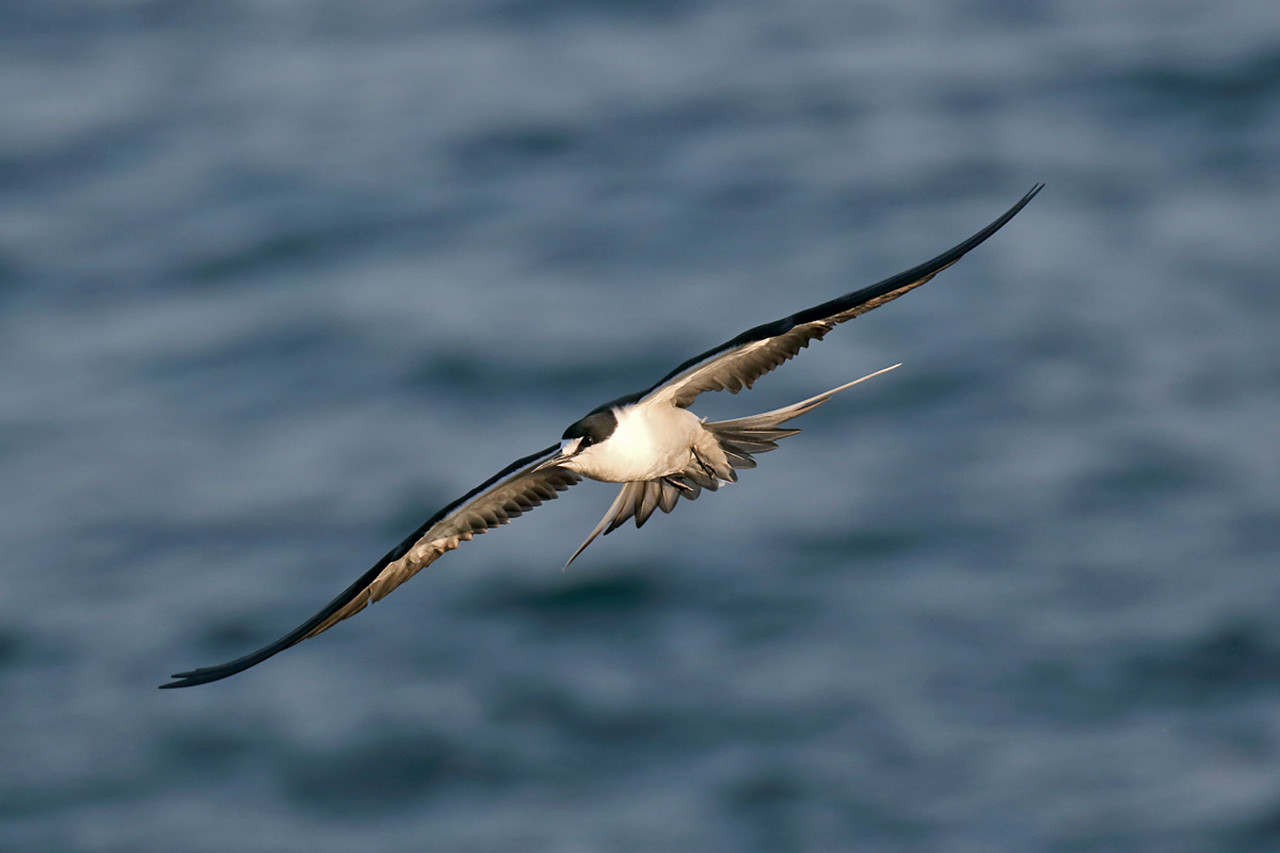Here are some bird stats for you! India is home to about 1300 bird species which is 12 per cent of the species found worldwide. About 53 of them are endemic to the Indian subcontinent. As recently as 2016, we discovered a new avian species—the White-browed Crake, in Maguri-Motapung Beel, Assam. What these facts make abundantly clear is that India's birds never cease to amaze!
While it may not be possible for you to learn about all the 1300 species that inhabit our country, it is possible to acquaint ourselves with the birds that share space with us. For example, did you know that the state of Goa, which only covers about 0.1 per cent of the country's area, is home to 481 bird species? That is almost 37 per cent of the country's listed birds! With increasing anthropogenic pressures on the avian population and several of them facing extinction, a close look at the birds in our respective states will help raise awareness and initiate citizen participation in conserving them.
To help you get started, we are sharing some basic details about the state birds of India. With some common and some unique names, get to know the official bird of every state and union territory in the country.
Andhra Pradesh
Ring-necked Parakeet (Psittacula krameri)
IUCN Red List Status: Least Concern
Bright green and named after the signature pinkish-black ring around the neck, Ring-necked Parakeets or Rose-ringed Parakeets are known for their ability to mimic human voices, a trait which unfortunately sees them fall prey to the pet trade. Also known as Ramachilika in Telugu, the signature rose-coloured neck ring indicates a male, while females have grey rings. Found in forest areas and urban landscapes, they feed on fruits, berries, leaves and seeds.
Arunachal Pradesh, Kerala
Great Hornbill (Buceros bicornis)
IUCN Red List Status: Vulnerable
Largest among the hornbill species from the subcontinent, Great Hornbills or Great Indian Hornbills are striking birds with black and white plumage and large curved beaks. They reside in subtropical, montane and evergreen forests and need dense forest areas for survival. Sadly, habitat loss and fragmentation is a significant threat to the magnificent bird.
Assam
White-winged Duck (Asarcornis scutulata)
IUCN Red List Status: Endangered
Also known as the White-winged Wood Duck, the species is listed among the most endangered birds globally. In Assam, it is also referred to as the Spirit Duck due to its strange, ghost-like calls. Tropical forests and undisturbed swamp areas are the bird’s preferred habitats, and loss of riverine forest corridors is a major factor contributing to its population decline.
Bihar, Delhi
House Sparrow (Passer domesticus)
IUCN Red List Status: Least Concern
Did you know that the House Sparrow is found on every continent except Antarctica? A common sight in urban areas, House Sparrows are often found in small flocks of eight to ten. Despite being well-adapted to living close to humans, these tiny brown birds are now finding it difficult to keep up with the fast-changing nature of urban ecosystems. Their populations are on a decline across cities globally.
Chhattisgarh, Meghalaya
Common Hill Myna (Gracula religiosa)
IUCN Red List Status: Least Concern
Striking black birds with yellow patches around their head and a distinct orange beak, Common Hill Mynas prefer humid forest areas and forest edges as habitats. They have the remarkable ability to mimic various sounds, including human voices, making them victims of the illegal pet trade. Hill mynas are important birds for forest regeneration as they aid in seed dispersal. The state bird of Chattisgarh is the Bastar Hill Myna (Gracula religiosa peninsularis), a subspecies endemic to the Kanger Valley region in the state. Bastar Hill Myna populations are impacted by increased deforestation in the region.
Goa
Flame-throated Bulbul (Rubigula gularis)
IUCN Red List Status: Least Concern
Flame-throated Bulbuls display a riot of colours, including olive, yellow and the signature orange patch on their throat. Also known as the Ruby-throated Bulbul, the bird is a forest-dweller found across the Western Ghats. Berries form a crucial part of their diet.
Gujarat
Greater Flamingo (Phoenicopterus roseus)
IUCN Red List Status: Least Concern
Gregarious in nature and known for their pink hues, Greater Flamingos are the largest flamingo species on the planet. Their courtship involves elaborate dance displays, and photographers often throng the wetlands of Gujarat to capture their movements during the breeding season. Greater Flamingos live in large flocks, which aid in protecting themselves from predators, especially when feeding.
Haryana
Black Francolin (Francolinus francolinus)
IUCN Red List Status: Least Concern
Locally known as Kaala Teetar, Black Francolins are members of the pheasant family. Male francolins exhibit black and brown shades with a chestnut-coloured patch on the throat, while females are largely brown. During the breeding season, male Black Francolins use an elevated perch like a rock or a mound to call out to females.
Himachal Pradesh
Western Tragopan (Tragopan melanocephalus)
IUCN Red List Status: Vulnerable
Western Tragopans are identified by their black plumage with white spots and a colourful head. In the local language, Western Tragopans are called Jujurana or King of Birds. They are also one of the rarest extant pheasant species. Hard to sight, Western Tragopans are elusive birds that reside in the higher elevations of the Himalayas.
Jharkhand, Puducherry
Asian Koel (Eudynamys scolopaceus)
IUCN Red List Status: Least Concern
The glossy blue-black plumage that is the signature of Asian Koels represents a male. Females, on the other hand, have brown plumage with white markings. Asian Koels are brood parasites and lay eggs in the nests of other birds like House Crows and Black Drongos. Did you know that Asian Koels can consume the fruits of the Yellow Oleander (Cascabela thevetia), which is poisonous to most mammals?
You may also like to read
Karnataka, Odisha, Telangana
Indian Roller (Coracias benghalensis)
IUCN Red List Status: Least Concern
Indian Rollers, with plumage dyed in varying shades of blue, are a common sight on tree branches, stumps and electric wires. These colourful birds can often be found in open fields and agricultural areas, where they hunt for insects on the ground. During the breeding season, male rollers put on aerobatic displays to garner the attention of potential mates.
Madhya Pradesh
Indian Paradise-Flycatcher (Terpsiphone paradisi)
IUCN Red List Status: Least Concern
A glossy black head, blue ring around the eyes, and a long, ribbon-like tail, Indian Paradise-Flycatcher males are hard to miss. Females have a shorter tail and lack the blue eyering. Male flycatchers can be found in two colour morphs, cinnamon and white. A resident of wooded areas, the Indian Paradise-Flycatcher breeds between May and July. Both male and female birds build cup-like nests on low branches.
Maharashtra
Yellow-footed Green-Pigeon (Treron phoenicopterus)
IUCN Red List Status: Least Concern
The Yellow-footed Green-Pigeon is aptly called Haroli or Hariyali in Marathi. Bright green in colour, the pigeons reside in lowland forests and in parks and gardens. They are often seen in flocks near fruiting trees and primarily feed on Ficus fruits.
Manipur, Mizoram
Hume’s Pheasant (Syrmaticus humiae)
IUCN Red List Status: Near Threatened
The Hume’s Pheasant is named after British naturalist Allan Octavian Hume's wife, Mary Ann Grindall Hume. Male birds sport bright chestnut colours with a blue neck and a red patch around the eyes, while females are brown-black in colour. Both sexes have long tail feathers, with the males sporting longer feathers. Forests are their preferred habitat and they feed on vegetation. Habitat destruction is a significant threat to the species. They are also trapped for trade or consumption, adding to their woes.
Nagaland
Blyth’s Tragopan (Tragopan blythii)
IUCN Red List Status: Vulnerable
A resident of forests in the northeastern parts of the country, the Blyth’s Tragopan needs areas that have dense vegetation beneath the forest canopy. Identified by their spotted appearance, male birds have a distinct yellow coloured patch on their face and a rust-coloured head. Females are brown throughout. Deforestation and hunting are significant threats to the species.
Punjab
Northern Goshawk (Accipiter gentilis)
IUCN Red List Status: Least Concern
Found in mature woodlands, Northern Goshawks are medium-sized raptors. A symbol of strength, the raptor is a common sight in the paintings of the Sikh guru, Guru Gobind Singh. Northern Goshawks are identified by their white and black barred appearance, with distinct stripes around the eyes. Although they prefer forests, their ideal habitats are forest regions interspersed with fields. Northern Goshawks are known to dive and attack their prey. They feed on small mammals and reptiles.
Rajasthan
Great Indian Bustard (Ardeotis nigriceps)
IUCN Red List Status: Critically Endangered
With an estimated 150 extant individuals, the Great Indian Bustard is a species on the brink of extinction. Once found in grasslands across the country, the bird now mainly seeks refuge in Desert National Park in Rajasthan. Habitat loss and degradation are some of the biggest threats to the species. Additionally, in a natural setting, their eggs are often destroyed by predators like foxes, dogs and pigs. Being a slow breeder, this majorly impacts their population status.
Sikkim
Blood Pheasant (Ithaginis cruentus)
IUCN Red List Status: Least Concern
Blood Pheasants are the only species in the genus Ithaginis. Male pheasants have a large red patch on their face, with grey-coloured upper parts and green and red markings on their underside. Females are brown in colour. Blood Pheasants prefer forests and shrublands as habitats. The birds occupy higher elevations during the summer months and descend to lower elevations as it gets colder. They feed on ferns, lichens and shoots.
Tamil Nadu
Asian Emerald Dove (Chalcophaps indica)
IUCN Red List Status: Least Concern
Asian Emerald Doves are also called Common Emerald Doves or Green Doves. The species can be seen foraging on the ground for fallen fruit, seeds and plants. With bright green torso, a pinkish-grey head and underparts, the birds prefer tropical forests, woodlands and mangroves as habitats.
Tripura
Green Imperial-Pigeon (Ducula aenea)
IUCN Red List Status: Near Threatened
Birds that display a distinct metallic green colour, Green Imperial-Pigeons are found in forests, mangroves and grasslands. Being frugivores, they play a crucial role in seed dispersal and forest regeneration. Habitat modification and fragmentation is a significant threat to the species.
Uttar Pradesh
Sarus Crane (Antigone antigone)
IUCN Red List Status: Vulnerable
With distinct grey plumage and a red head and neck, Sarus Cranes are the world’s tallest flying birds. During the breeding season, pairs remain close and are seen inhabiting water-abundant regions. Conversion of land for agriculture is a significant threat to Sarus Crane populations. Not only does this contribute to habitat destruction, but in the absence of natural wetlands, Sarus Cranes are forced to forage on agricultural fields. This leads to the ingestion of pesticides and poisoning.
Uttarakhand
Himalayan Monal (Lophophorus impejanus)
IUCN Red List Status: Least Concern
Found only in the upper echelons of the Himalayas, Himalayan Monals are iconic for the multicoloured plumage of their male species. Monals have sharp claws and beaks that help them to dig when they are looking for insects, roots and seeds. They leave behind distinct patterns on the soil when they forage. Although designated with the least concern status, their populations are decreasing due to various factors, including habitat modification.
West Bengal
White-throated Kingfisher (Halcyon smyrnensis)
IUCN Red List Status: Least Concern
Identified by their distinct brown head and white patch on the throat, White-throated Kingfishers are a common sight near water bodies and agricultural fields. They prefer to stay perched on elevated structures or on trees. While most species of kingfishers primarily feed on fish and dive into water looking for their prey, White-throated Kingfishers prefer to hunt in wooded regions, rarely going underwater. They mainly feed on insects, reptiles and rodents.
Andaman & Nicobar
Andaman Woodpigeon (Columba palumboides)
IUCN Red List Status: Near Threatened
Endemic to the Andaman and Nicobar archipelago, the Andaman Woodpigeon requires dense broadleaved evergreen forests for survival. Characterised by a white head, yellow beak and black torso, the Andaman Woodpigeon is a frugivore and feeds on large berries and fruits. Habitat loss and fragmentation are significant threats to the species.
Chandigarh
Indian Grey Hornbill (Ocyceros birostris)
IUCN Red List Status: Least Concern
Brownish-grey in colour, Indian Grey Hornbill is the most common hornbill species found on the subcontinent. They are also the smallest among the hornbills that reside in the country, and can thrive in both forest areas and urban landscapes. Highly adaptable, they are known to build nests within building cavities and other manmade structures.
Jammu & Kashmir, Ladakh
Black-necked Crane (Grus nigricollis)
IUCN Red List Status: Near Threatened
True to their name, the medium-sized cranes have a black neck and head, a grey torso, and a dropping of black feathers above the tail. The bird feeds on fish, birds, frogs and insects. The Near-threatened crane species prefers to breed in lakes, and Ladakh is the only summer breeding ground for the bird in India. The number of breeding pairs at the moment in the country is believed to be under 20. The Black-necked Crane also commands high respect in the region, with numerous local songs that sing its praises. Habitat modification, lack of undisturbed habitat spaces and wetland pollution are the major concerns for the species.
Lakshadweep
Sooty Tern (Onychoprion fuscatus)
IUCN Red List Status: Least Concern
Seabirds that belong to the Laridae family, Sooty Terns are also called ‘wide-awakes’ as they produce loud calls in large flocks. Once adults leave for the open sea, they return to island areas only to breed. Sooty Terns mainly feed on fish and build nests on the ground. Changes in sea surface temperatures are impacting the foraging and breeding activities of the species.

